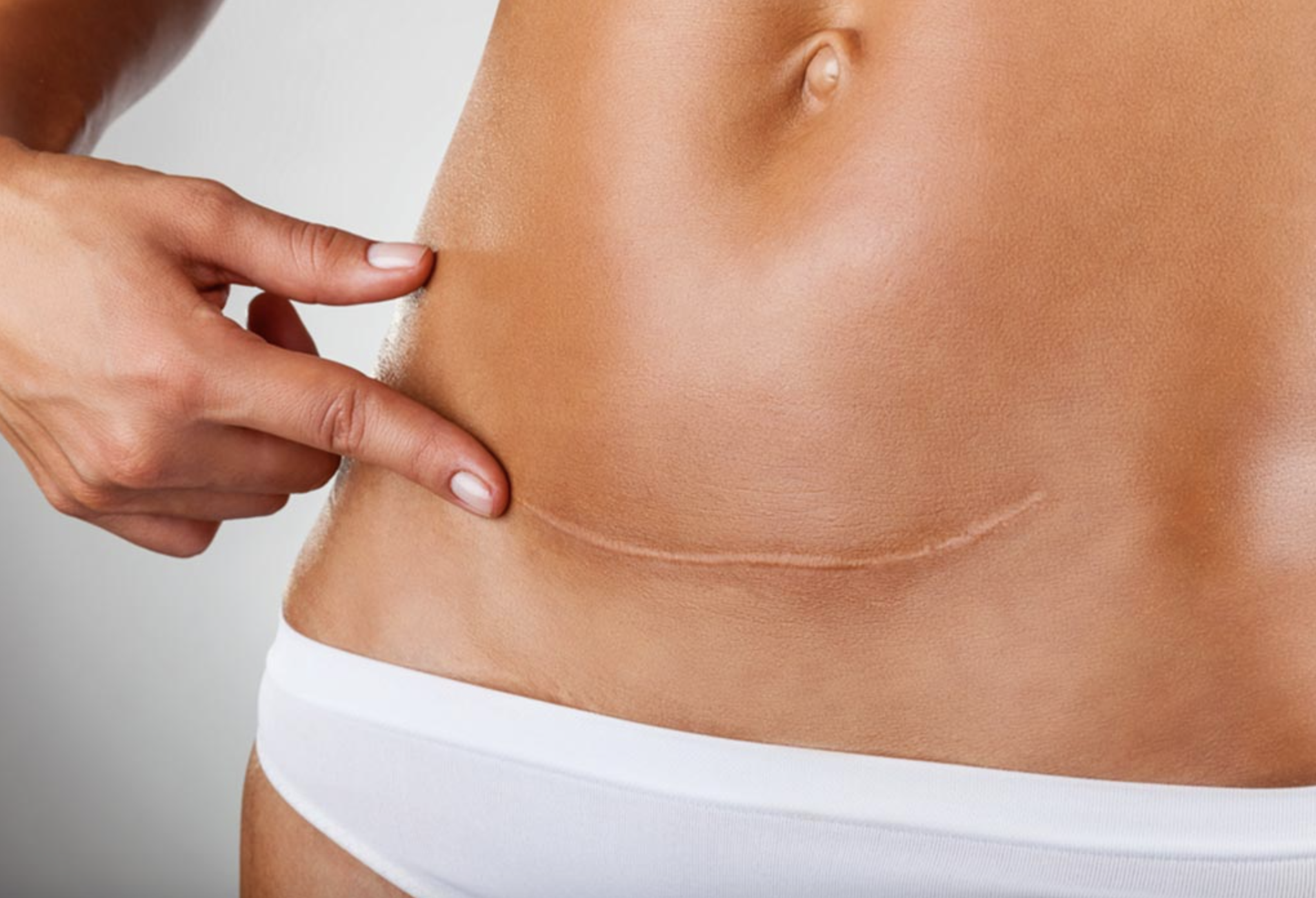
Abdominal Scars From
C-section or Other Abdominal Surgery
An abdominal adhesion is thick, band-like tissue which forms underneath your scar and binds it to the tissue (abdominal muscle or organs) that lies below. Our skin, tissue, and organs need to be able to glide past one another as we move our bodies. As your body tries to heal after abdominal surgery, often times an adhesion will form which causes the skin, tissue, and/or organs to stick together and restricts movement. “Abdominal adhesions develop in more than 9 out of every 10 people who have surgery that opens the abdomen”. (1)
Symptoms/Functional Problems
Symptoms of abdominal scarring can include pain, scar sensitivity, discomfort with pressure on the abdomen, limitations in movement and restricted participation in daily activities due to discomfort. Complications of having an adhesion may include small bowel obstruction, infertility, and chronic pain. (2)
Causes
Abdominal scarring can be caused by various procedures and surgical interventions including C-sections, hysterectomies, laparoscopic surgery, tubal ligation, appendectomies, cosmetic surgeries (like having a tummy tuck), prolapse repair, and more. As your body heals from a surgical intervention, the skin and tissue around the surgical site begin “scarring down.” This process of scarring down may lead to your scar sticking to the tissue underneath the skin, called an adhesion, which may cause reduced blood flow to the area, reduced movement, and pain.
FAQ
Q: Is it common to have pain where my abdominal scar is?
A: Yes. Many studies that review the incidence of abdominal scarring after a surgical procedure identify chronic pain and discomfort as a prevalent problem among the patients.
Q: Do I have a higher risk of having issues with my scar after my C-section?
A: Yes. One study identifies women who have had a C-section to be at higher risk for difficulty with post-surgical adhesions than women who did not have a C-section. (3)
Q: I’ve had this scar for many years, is it too late to seek treatment for it?
A: No. You may still benefit from treatment by a physical therapist to decrease pain, maximize movement, and improve your quality of life. Studies show that chronic symptoms from abdominal scarring can be improved. (4) Come see us for an evaluation.
Q: Would I benefit from pelvic floor physical therapy (PFPT)?
A: If you have had any type of abdominal surgery and are experiencing the symptoms described here, you may benefit from PFPT. This specialized therapy is useful in identifying the source of your pain and implementing techniques to improve your scarring and related symptoms.
Treating and Managing Your Abdominal Scars
In general, a pelvic floor physical therapist will implement manual techniques to mobilize the scar and tissue surrounding your scar in order to improve blood flow to the area and mobility of the skin and tissue underneath. This type of soft-tissue mobilization will increase your ability to move more functionally without discomfort. One study shows that soft-tissue mobilization is highly beneficial for both those who have recently had surgery and for those with chronic pain due to a previous abdominal surgery even years later. (5)
At N-Balance Physical Therapy, we offer a comprehensive treatment plan that includes a thorough evaluation to identify the cause of the problems you are experiencing and implement an individualized treatment plan to improve your symptoms and scarring.
References
- U.S. Department of Health and Human Services. (n.d.). Abdominal Adhesions. National Institute of Diabetes and Digestive and Kidney Diseases. https://www.niddk.nih.gov/health-information/digestive-diseases/abdominal-adhesions.
- R. G., Broek, R. P., Issa, Y., van Santbrink, E. J., Bouvy, N. D., Kruitwagen, R. F., Jeekel, J., Bakkum, E. A., Rovers, M. M., & van Goor, H. (2013). Burden of adhesions in abdominal and pelvic surgery: systematic review and met-analysis. BMJ (Clinical research ed.), 347, f5588. https://doi.org/10.1136/bmj.f5588
- Al-Husban, N., Elayyan, Y., El-Qudah, M., Aloran, B., & Batayneh, R. (2020). Surgical adhesions among women undergoing laparoscopic gynecological surgery with or without adhesiolysis – prevalence, severity, and implications: retrospective cohort study at a University Hospital. Therapeutic advances in reproductive health, 14, 2633494120906010. https://doi.org/10.1177/2633494120906010
- Wasserman, J. B., Copeland, M., Upp, M., & Abraham, K. (2019). Effect of soft tissue mobilization techniques on adhesion-related pain and function in the abdomen: A systematic review. Journal of bodywork and movement therapies, 23(2), 262–269. https://doi.org/10.1016/j.jbmt.2018.06.004
- See note 4 above